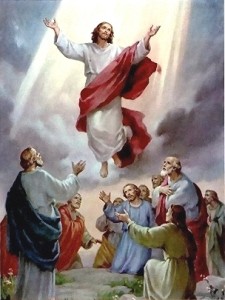Apr
3
On the Resurrection Hypothesis, part 5 of 5: Conclusion
If you have been following this series, you know that we have covered a lot of ground, including various lines of evidence that generally — and, in some cases, quite strongly — support the case for Jesus Christ having been physically raised from the dead on the third day after his death and burial. We have endeavored to demonstrate why this is not merely wishful thinking on behalf of the faithful but a reasonable conclusion from objective analysis used in other disciplines, as well. So, I will wrap it up with this…
Concluding Assessment
It has been argued that the same criteria that the Jesus Seminar used (though somewhat questionably and inconsistently) to evaluate the sayings of Jesus can also be used to evaluate the miracles of Jesus. We might, then, apply the same criteria to the evidence for the historicity of Jesus’ resurrection. For example:
 1) *Multiple attestation.* Several different “resurrection appearance traditions” are recorded in the Gospels and Paul’s epistles. Of course, throughout the NT we see attestation to the fact that the first disciples believed Jesus’ had been resurrected.
1) *Multiple attestation.* Several different “resurrection appearance traditions” are recorded in the Gospels and Paul’s epistles. Of course, throughout the NT we see attestation to the fact that the first disciples believed Jesus’ had been resurrected.
2) *Dissimilarity.* The origin of the disciples’ belief in Jesus’ resurrection cannot be explained by prior influences from Judaism or as a ‘retrojection’ of Christian theology.
3) *Embarrassment.* This is exemplified by the discovery of the empty tomb by women. The gospel message would have been better served (from a human perspective, that is) if this role had been played by men.
4) *Context & expectation.* Again, nothing in Jewish teaching expected the Messiah to die, let alone rise from the grave.
5) *Effect.* Adequate cause must be found for established facts like the earliest Jewish polemics about the disciples’ alleged theft of Jesus’ body, the disciples’ transformation after the crucifixion, and the conversions of James and Paul. These can all be sufficiently explained by the empty tomb, the resurrection appearances, and the disciples’ coming to believe in Jesus’ physical resurrection.
6) *Principles of embellishment.* This criterion is the reason why the Markan account of the empty tomb cannot be regarded as legendary, especially when contrasted with the theologically and apologetically embellished account in the Gospel of Peter.
7) *Coherence.* Our three lines of evidence for the fact of Jesus’ resurrection are established independently, yet they hold together, forming a powerful argument for the resurrection’s historicity. In addition, the Apostle Paul’s teaching on the nature of the resurrection body is consistent with Jesus’ physical postmortem appearances and the empty tomb.
But, when considering *all* the evidence, is the resurrection of Jesus the best explanation? Just because all the naturalistic explanations fall short, we can’t let the resurrection hypothesis simply win by default. We need to go back to McCullagh’s criteria for testing a historical explanation and see how well the resurrection hypothesis measures up. Remember, it must…
1) …together with other true statements, imply further statements describing present, observable data. The “present, observable data” consists primarily (though not solely) of the historical NT texts on which the historian bases his reconstruction of the relevant events. Of course, there is also the Christian faith, whose origin must be explained. These are explained by the resurrection hypothesis.
2) …have greater explanatory scope than its rivals. The resurrection hypothesis explains all three categories of evidence (i.e., empty tomb, postmortem appearances, origin of disciples’ belief), whereas rival theories (e.g., hallucinations, women went to wrong tomb, man crucified wasn’t Jesus of Nazareth) only explain one, maybe two.
 3) …have greater explanatory power than its rivals. Apparent deaths, conspiracies, etc., just aren’t nearly as convincing as the resurrection hypothesis is in explaining all of the evidence. None of the rivals give adequate reasons for things like the physicality of the resurrection appearances, the disciples’ transformation, or the conversions of Paul and James.
3) …have greater explanatory power than its rivals. Apparent deaths, conspiracies, etc., just aren’t nearly as convincing as the resurrection hypothesis is in explaining all of the evidence. None of the rivals give adequate reasons for things like the physicality of the resurrection appearances, the disciples’ transformation, or the conversions of Paul and James.
4) …be more plausible than its rivals. When one sets aside any philosophical prejudices against the supernatural, the hypothesis of Jesus’ resurrection is at least as plausible as any other.
5) …be less ad hoc than its rivals. We have explained why the resurrection hypothesis is no more ad hoc (and, in some cases, less so) than its rivals.
6) …be disconfirmed by fewer accepted beliefs than its rivals. What accepted belief disconfirms the resurrection, except possibly “Dead men do not rise”? But, then we’re back to an a priori rejection of the miraculous. A purely natural revivification would be disconfirmed, but not resurrection by the power of God. On the other hand, rival hypotheses are disconfirmed by accepted beliefs, such as the unstable nature of conspiracies, the inevitably fatal result of crucifixion, the psychological characteristics of hallucinations, etc.
7) …so exceed its rivals in fulfilling conditions (2) thru (6) that there is little chance of a rival hypothesis, after further investigation, doing a better job. Over the last three centuries, critics and skeptics have tried to disprove the resurrection of Jesus, or at least give better explanations for the evidence. But, even with the knowledge and resources of contemporary scholarship, they have failed.
The simple fact is that the resurrection is the best explanation of the facts, and there doesn’t seem to be anything better on the horizon.
Case closed.
On that note, I’d like to end with the following passage from Paul’s Letter to the Colossians (ISV):
“2:6 So then, just as you have received the Messiah Jesus the Lord, continue to live dependent on him. 2:7 For you have been rooted in him and are being built up and strengthened in the faith, just as you were taught, while you continue to be thankful. 2:8 See to it that no one enslaves you through philosophy and empty deceit according to human tradition, according to the basic principles of the world, and not according to the Messiah, 2:9 because all the essence of deity inhabits him in bodily form. 2:10 And you have been filled by him, who is the head of every ruler and authority. 2:11 In union with him you were also circumcised with a circumcision performed without human hands by stripping off the corrupt nature by the circumcision performed by the Messiah. 2:12 When you were buried with the Messiah in baptism, you were also raised with him through faith in the power of God, who raised him from the dead. 2:13 Even when you were dead because of your offenses and the uncircumcision of your flesh, God made you alive with him when he forgave us all of our offenses, 2:14 having erased the charges that were brought against us, along with their obligations that were hostile to us. He took those charges away when he nailed them to the cross. 2:15 And when he had disarmed the rulers and the authorities, he made a public spectacle of them, triumphing over them in the cross.”
Amen!
===========
Credit where credit is due: The material for defending the historical burial & resurrection of Jesus was primarily adapted from William Lane Craig’s “Did Jesus Rise from the Dead?” in the book Jesus Under Fire, eds. J.P. Moreland and Michael J. Wilkins.















